Physical Address
304 North Cardinal St.
Dorchester Center, MA 02124
Physical Address
304 North Cardinal St.
Dorchester Center, MA 02124
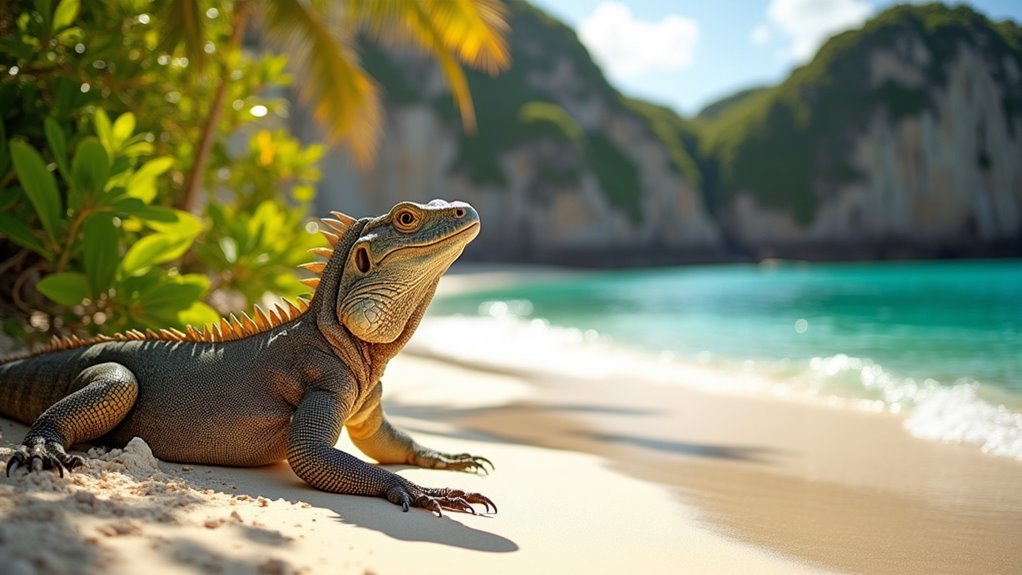
From pink beaches to ancient dragons, Komodo Island offers nine unforgettable experiences that will transform your travel bucket list.
You’ve heard of Bali, you’ve dreamed of Thailand, but you’ve probably overlooked Komodo Island. This Indonesian paradise offers more than just the famous dragons that bear its name. It’s a destination where nature, adventure, and cultural experiences converge in spectacular fashion. From world-class diving to pristine pink beaches, Komodo delivers experiences that even seasoned travelers find remarkable. What makes this remote island worth the journey? The answer lies in these nine compelling reasons.
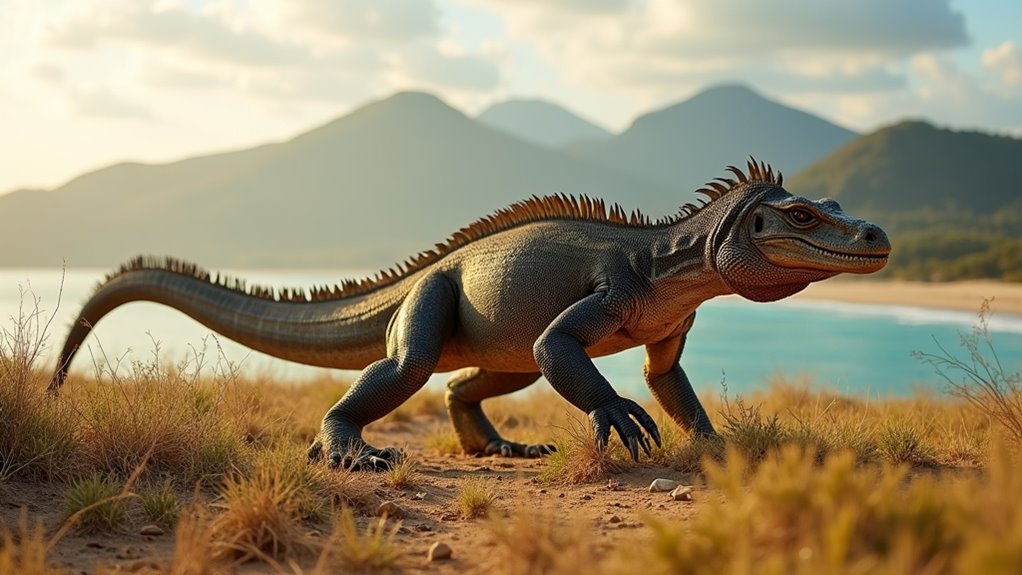
Where else can you observe the world’s largest lizards thriving in their native environment? On Komodo Island, you’ll witness these impressive predators in their preferred habitat of dry grasslands, savannas, and low-elevation tropical forests.
Discover Komodo Island, where nature’s largest lizards roam freely through savanna and tropical forest habitats.
You’ll see them basking on rocky shores to regulate their body temperature or hunting in the afternoon heat when they’re most active. If you’re lucky, you might spot younger dragons climbing trees or adults digging burrows on ridges where cool breezes blow. These legendary creatures can reach up to 10 feet long and weigh as much as 300 pounds in males, making them truly impressive specimens to observe.
These burrows serve as both shelter and hunting stations.
Watch as they sprint at surprising speeds up to 20 km/h or stand on their hind legs using their tail for support to catch prey. Their hunting and territorial behaviors are fascinating displays of nature’s evolutionary marvels. Komodo Island offers travel list worthy experiences that combine adventure with rare wildlife encounters found nowhere else on earth.
Nestled within the active volcanic shatter belt between Australia and the Sunda shelf, Komodo Island offers some of Indonesia’s most dramatic landscapes. You’ll discover an island sculpted by ancient volcanic activity, featuring impressive peaks like Mount Satalibo and Mount Tora that rise up to 735 meters.
As you explore the 30-kilometer-long island, you’ll encounter rounded hills and historic lava flows that have created a rugged, otherworldly terrain. The dry climate (with temperatures reaching 40°C) has produced a sparse, unique landscape unlike anywhere else in Indonesia.
This geological wonderland provides stunning vistas at every turn. The island’s volcanic origins have shaped not only its topography but also created diverse ecosystems from mountaintops to surrounding coral reefs, making it a paradise for nature photographers and adventure seekers. The dramatic coastline features sheer cliffs that plunge directly into azure waters, creating a breathtaking contrast between land and sea.
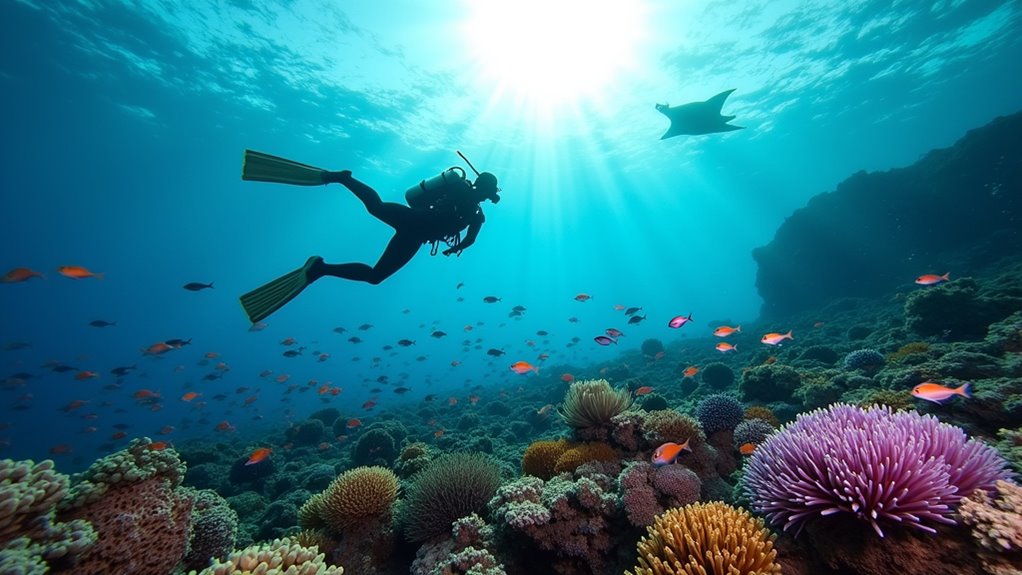
Komodo Island boasts some of the world’s most spectacular diving opportunities, with vibrant underwater ecosystems thriving around its shores. You’ll encounter drift dives like Tatawa Besar, where strong currents attract pelagic species, and macro-rich sites like Torpedo Alley with its ghost pipefish.
The region’s coral diversity is exceptional—from table corals at Batu Bolong to nudibranch colonies at Cannibal Rock. Don’t miss Manta Point, where rays with 6-meter wingspans glide year-round, or the unique topography of hollow rock formations creating dramatic swim-throughs. The stunning Yellow Wall on the south of Rinca Island offers a breathtaking display of vivid yellow coloration from abundant sea cucumbers and feather stars.
While enjoying underwater adventures, divers should be aware that Bali’s venomous sea snakes can occasionally be spotted in these waters. Conservation efforts are paying off as coral recolonization progresses across monitored reef sites. UNESCO management has implemented mooring buoys to prevent anchor damage, contributing to the return of reef sharks, schooling fish, and other indicators of ecosystem health.
Beyond its remarkable diving sites, the Komodo archipelago holds exceptional status as a UNESCO World Heritage Site, recognized in 1991 for its Outstanding Universal Value. This 1,733 km² protected area serves as a global conservation benchmark for its integrated terrestrial-marine protection framework.
When you visit, you’re supporting conservation efforts that balance tourism with preservation. The park follows an Integrated Tourism Master Plan evolving from mass tourism to sustainable models, while UNESCO continuously monitors habitat protection. The recently intensified surveillance efforts have resulted in significant reductions in poaching and illegal fishing activities throughout the marine areas.
Unlike the Gili Islands, Komodo offers a more rugged and untamed natural experience with its unique biodiversity and dramatic landscapes.
As a dual ecosystem spanning three major islands (Komodo, Rinca, and Padar), the park serves as a critical refuge for endangered species and a corridor for migratory marine life.
Your visit contributes to international research and anti-poaching initiatives, helping to maintain this site’s ecological integrity for future generations.

While diving and pristine beaches attract many visitors, Komodo Island‘s greatest treasure lies in its extraordinary wildlife viewing opportunities. You’ll have the chance to observe the endangered Komodo dragon in its natural habitat—fewer than 3,500 remain worldwide due to habitat loss and climate change.
The island’s diverse ecosystem supports an impressive array of other wildlife. During guided tours, you can spot Timor deer, wild boar, crab-eating macaques, and wild water buffalo. Bird enthusiasts will be thrilled to see the critically endangered cockatoos that are among the approximately 1,031 yellow-crested cockatoos remaining in the park. After morning wildlife excursions, travelers can enjoy Bali-style cafes offering tropical breakfast options similar to those found in Uluwatu. For the best wildlife viewing experience, visit during the dry season when animals gather around water sources.
Komodo National Park’s ecological value extends beyond dragons, offering both marine and terrestrial habitats worth exploring. Remember to practice responsible tourism to help preserve this unique ecosystem for future generations.
The natural wonders of Komodo extend into affluent cultural traditions found in the surrounding villages, offering visitors an authentic glimpse into local life beyond wildlife encounters.
In Komodo Village, you’ll discover distinctive panggung stilt houses designed to keep dragons at bay while skilled artisans craft wooden dragon souvenirs. These resourceful villagers power their community with a generator until 10pm, adapting to life without consistent electricity. Venture further to Bena Village to witness active megalithic traditions surrounding ancient stone formations within its circular settlement pattern.
Todo Village reveals the fascinating legacy of the Manggarai kingdom through its conical-roofed homes and oral histories shared by local guides. At Saga Village, you’ll enjoy personalized tours led by the current chief who demonstrates traditional coffee cultivation methods and rain ceremonies. Many villagers practice traditional healing methods reminiscent of Balinese massage techniques that have been passed down through generations.
Each village offers unique architectural styles, craftsmanship, and livelihood practices that have sustained these communities for generations despite limited modern infrastructure.
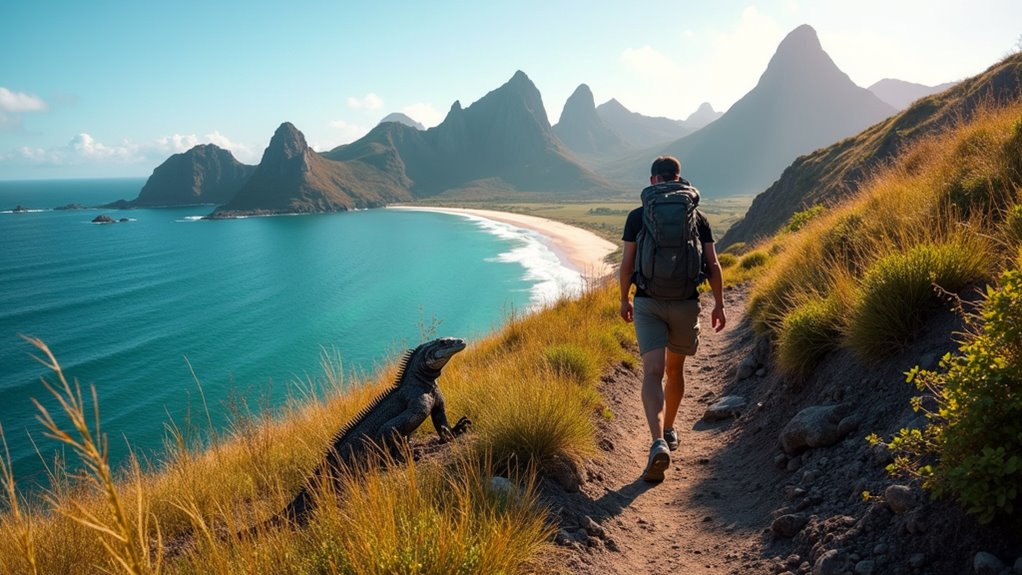
Komodo National Park offers adventure seekers a challenging network of hiking trails across its rugged islands, where you’ll encounter everything from gentle slopes to demanding ascents.
Padar Island’s iconic 2 km trail rewards your effort with views of three differently colored beaches, while Gili Lawa Darat provides panoramic vistas from its summit.
For wildlife enthusiasts, Komodo Island’s treks ranging from 1 to 2.5 hours offer chances to spot the legendary Komodo dragons in their natural habitat.
Most trails require guided tours, which include safety briefings and navigation assistance through varied terrains.
These hikes are perfect for thrill seekers looking for an adrenaline rush while experiencing Bali’s natural beauty.
Plan your hike during sunrise or sunset for the most breathtaking photography opportunities.
Remember to wear proper footwear and bring sufficient water, as the tropical climate demands proper hydration throughout your adventure.
The smaller Kelor Island features a steep, short hike that can be completed in under an hour while still delivering spectacular views of the surrounding turquoise waters.
After trekking through Komodo’s rugged hills, you’ll be rewarded with some of the world’s most extraordinary coastal treasures. The famous Pink Beach (Pantai Merah) gets its striking color from Foraminifera—tiny marine organisms that leave red pigments in their shells, creating a unique blend with white sand.
Beyond Pink Beach, you’ll find Long Beach on Padar Island offering excellent snorkeling amid vibrant coral reefs. These pristine shores remain remarkably clean and provide perfect settings for photography and sunset viewing.
The beaches aren’t just beautiful—they’re ecologically significant. They form part of a diverse ecosystem within Komodo National Park, where colorful fish swim near the shore and calcium carbonate from marine life contributes to the unique geological formations. Taka Makassar, a tiny sandbank that appears and disappears with the tides, offers another extraordinary coastal experience.
For nature lovers, these coastal wonders are simply unmissable. While less crowded than popular Bali destinations, Komodo’s beaches offer tranquil atmospheres that allow visitors to truly connect with nature.
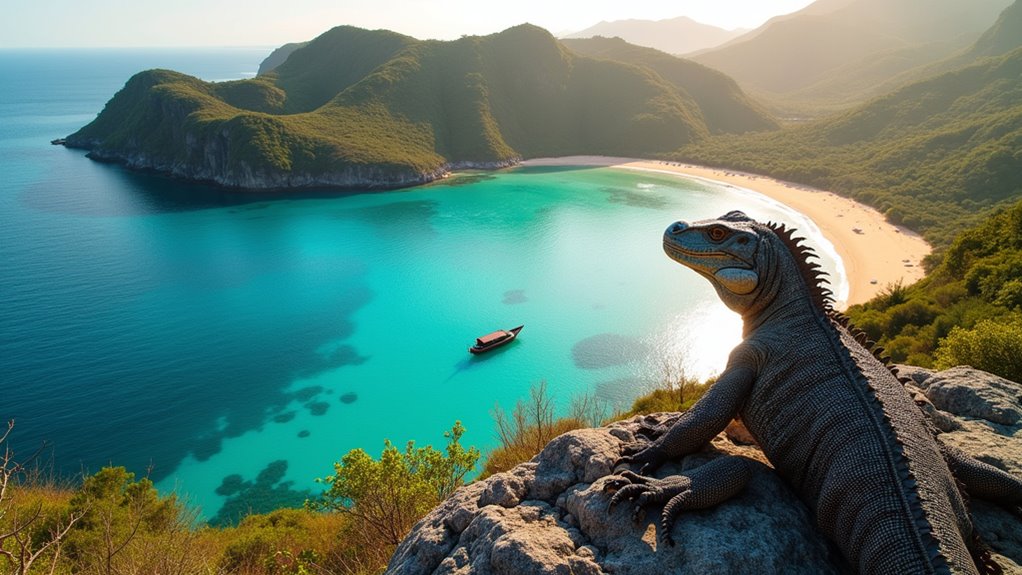
Unlike mass tourism destinations that host millions each year, Komodo Island offers a genuinely exclusive travel experience with visitor numbers carefully regulated. You’ll appreciate the managed tourist flows through permits and zoning systems that prevent the overcrowding seen at other world-class destinations.
The island’s popularity has skyrocketed from 50,000 to over 1 million annual visitors in just a decade, prompting authorities to implement visitor caps and conservation fees. The fragile ecosystem contains not just the famous dragons but also stunning marine environments and coral reefs that require protection. Unlike Ubud which draws visitors for its cultural richness, Komodo’s appeal is primarily its natural wonders. Starting mid-2025, periodic closures will allow the ecosystem to regenerate while maintaining limited access to certain areas.
This controlled approach ensures your wildlife encounters, particularly with the iconic Komodo dragons, remain authentic and undisturbed. You’re experiencing a destination that prioritizes quality over quantity, protecting what makes it special for future generations.
You’ll likely come to Komodo Island for the dragons but find yourself enchanted by everything else it offers. Ironically, this remote paradise, once virtually unknown, now faces the challenge of sustainable tourism as more travelers discover its wonders. Don’t wait too long—the island’s conservation efforts may soon limit visitors even further to protect what makes this destination so worth experiencing in the first place.